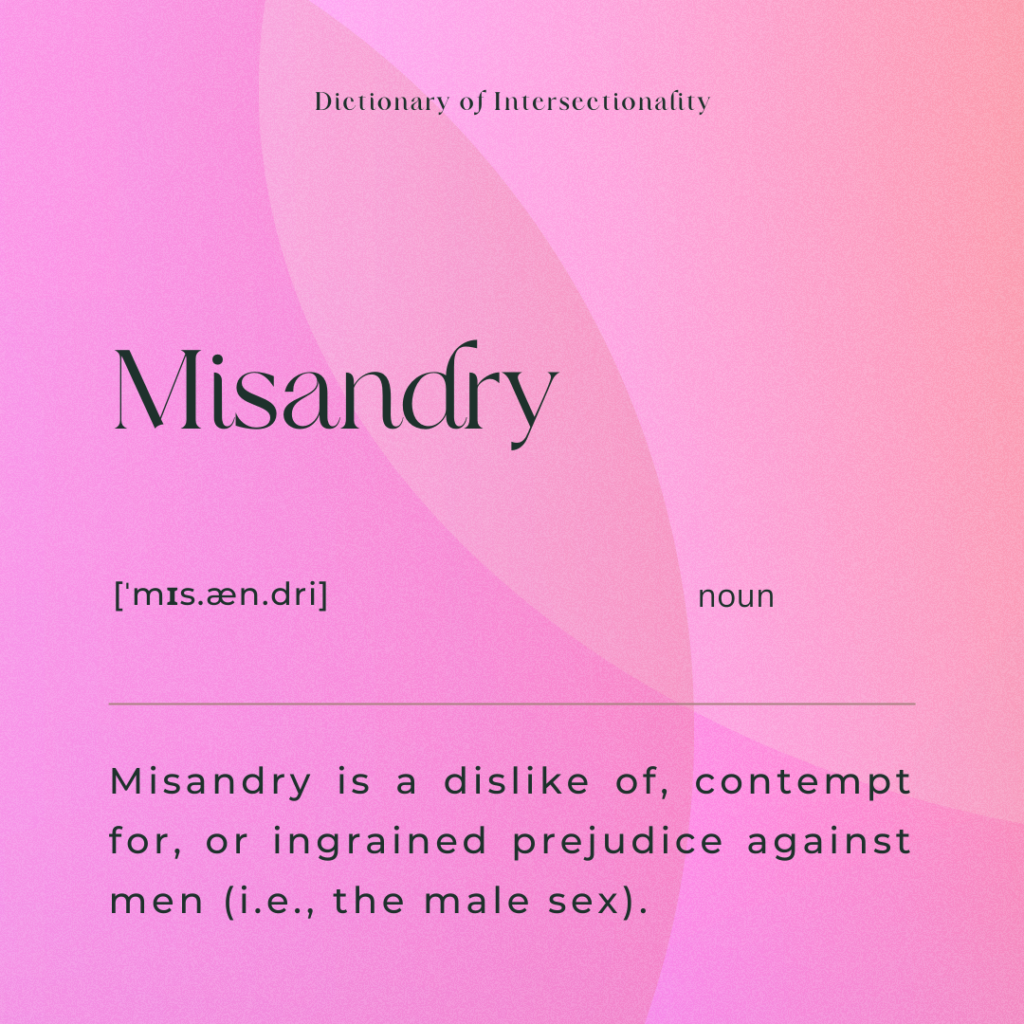
Misandry is a dislike of, contempt for, or ingrained prejudice against men (i.e., the male sex).
The term was coined in the late 19th century from the Greek miso– (“hating”) + anēr, andr- (“man”), on the pattern of misogyny.
It is popularized by men’s rights activists and other groups around masculinity as an ideology and socio-political movement.
Proponents of misandry argue that emphasis on women’s rights has worsened the position of men. They have criticized modern law regarding divorce, domestic violence, and the treatment of male survivors of sexual assault as systemic prejudice against men.
E.g., Nathanson & Young, religious studies professors, posit that in North American popular culture, there has been a pervasive negative portrayal of men which leads to misandric stereotypes about men. That is, the male characters of TV shows and movies are either evil or inadequate or both, while few female characters would be portrayed as honorary.
Most scholars deny the equivalence of misandry to misogyny, which is significantly more pervasive in scope and more severe in its effects. According to anthropologist David D. Gilmore, misandry is not a hatred of men as men. He proposed the term “viriphobia” to demonstrate that misandry targets mostly one type of man – virile male machismo, along with the oppressive male roles of patriarchy. Sexism, in contrast, targets all women as a group, regardless of their behavior and attitudes.
See more resources
Oxford English Dictionary
Young, K. K., & Nathanson, P. (2010). Sanctifying Misandry: Goddess Ideology and the Fall of Man. McGill-Queen’s University Press.
https://www.jstor.org/stable/j.ctt7zs48
Wikipedia contributors. (2023, January 15). Misandry. Wikipedia.
